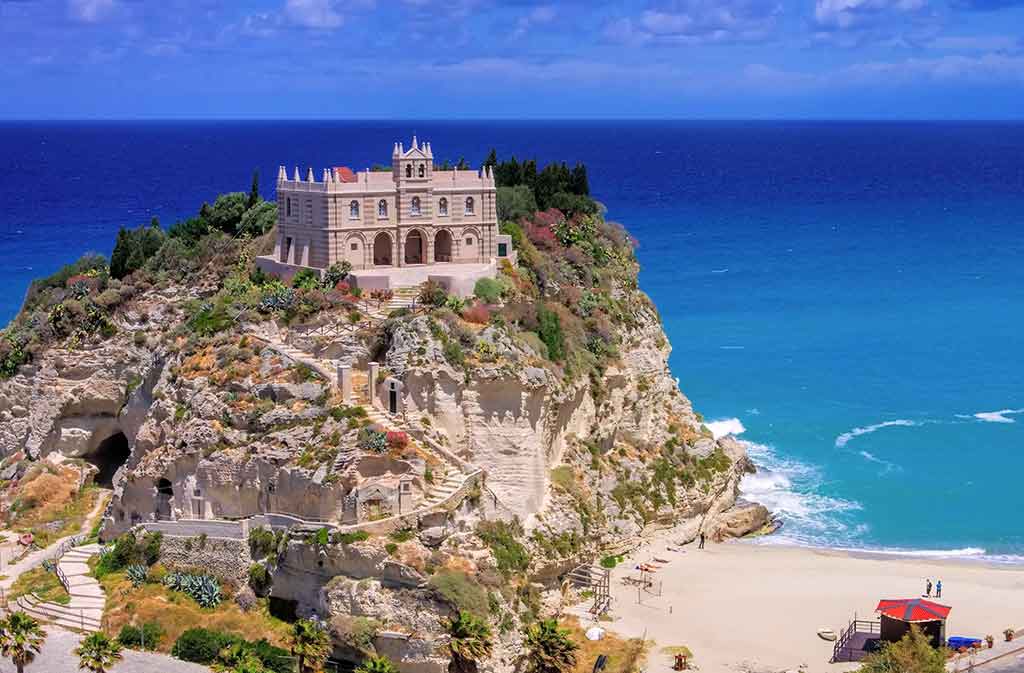
It is pleasant stroll up to the
Chiesa dell'Isola, a church dedicated to seafarers, that sits on top of a rocky outcrop that juts out into the sea.
Some believe that it rose on the site of a fourth-century Basilian cell; we know, however, that Pope Urban II assigned it to the Abbey of Montecassino in 1077. Rebuilt in Gothic style and consecrated on 23 April, 1397, it underwent various works of restoration over the centuries and was definitively rebuilt after the disastrous earthquake of 1905.
The
facade is remarkable, decorated with horizontal stripes and containing three majestic round-arched doorways. Beneath the porticoes frescoes can be admired that depict episodes related to the history of the coenoby and an epigraph that records the reconstruction. Inside, there is a fourteenth-century marble tomb, with a figured relief, perhaps attributable to the
Mileto Master or to one of his pupils and various other fine statues.
Once the famous wooden crucifix, better known as the
Black Christ, was kept in the church, but now this fifteenth-century work of great value is in the cathedral.